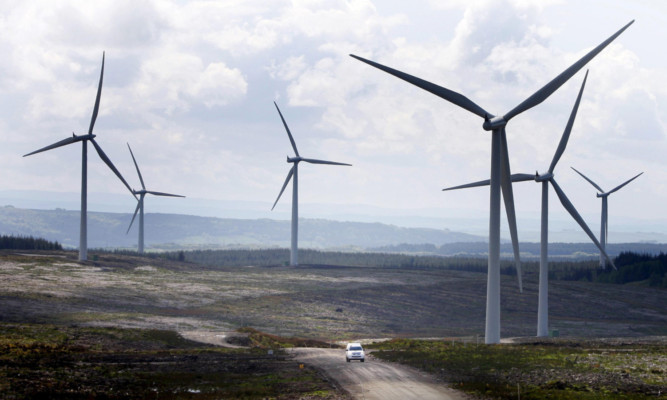CAMPAIGNERS HAVE hit out following the news that two rare birds of prey died after striking wind turbines.
RSPB Scotland revealed that an adult hen harrier had been found dead at the 68-turbine Griffin windfarm in Highland Perthshire earlier this year.
A second raptor was discovered with a broken wing three weeks later and sadly died from its injuries.
Investigations suggest that both birds were fatally injured as a result of mid-air collisions with the turbine blades.
A spokesman for the organisation said the deaths were “tragic” and would have an impact on the local breeding success of an already vulnerable species which is “teetering on the brink of extinction”.
However, he did add that windfarm collisions were “very rare” events.
This has failed to placate poet and anti-windfarm campaigner John Burnside, who believes the full extent of the issue goes unrecorded.
He told The Courier: “I am saddened by these incidents but they do not reflect the whole story. I believe the amount of birds killed or injured is actually greater than we are told.
“When they strike a turbine, they don’t necessarily fall at the point of contact. Many fly off elsewhere to either recover or die.
“Many people believe that birds can see the turbines to avoid them but they don’t appreciate that raptors hunt with their eyes on the ground.
“They don’t see where they are going and so can quite easily fly into the blades.”
Mr Burnside, from Arncroach in Fife, called for the RSPB to start putting more pressure on windfarm developments to prevent this type of incident from happening again and threatening the future of rare breeds such as the hen harrier and sea eagle, which was recently reintroduced to Fife.
Head of planning and development at RSPB Scotland Aedn Smith revealed that it has been working closely with SSE, operators of the Griffin windfarm, to avoid any more deaths.
This has included visiting the site near Aberfeldy and issuing advice to increase post-construction monitoring in a bid to understand how birds use the site, particularly during their display periods.
Mr Smith said: “It is important to remember that climate change still poses one of the biggest threats to birds and other wildlife. Thus, appropriately-sited windfarms remain part of a wider range of measures to mitigate this impact.
“Nonetheless, this new information will be used to help evaluate future windfarm proposals. Lessons must be learned.
“This case also highlights the importance of continued monitoring before, during and after a development, so we can ensure such projects can exist without detrimentally affecting our wildlife.”
A spokesman for SSE confirmed that on April 18 engineers discovered a dead harrier lying below a turbine and on May 9 a second one was found injured nearby.
“SSE staff immediately took the bird to a local vet for assessment and treatment and notified the RSPB and SNH (Scottish Natural Heritage),” he said.
“Unfortunately, the bird died two days later in the care of a raptor expert.
“These incidents are very rare and the two hen harrier deaths are the first recorded on any of SSE’s windfarms.”
sgray@thecourier.co.uk
